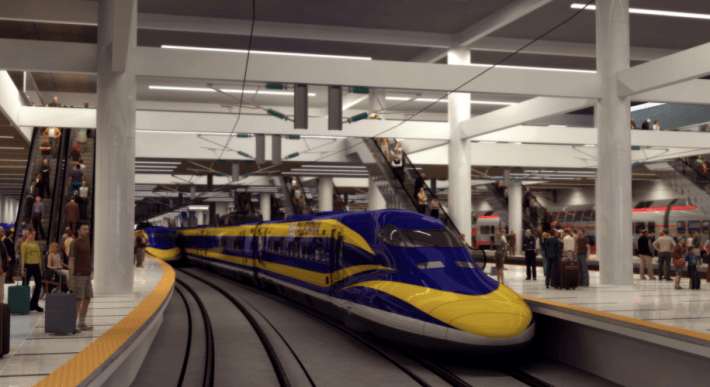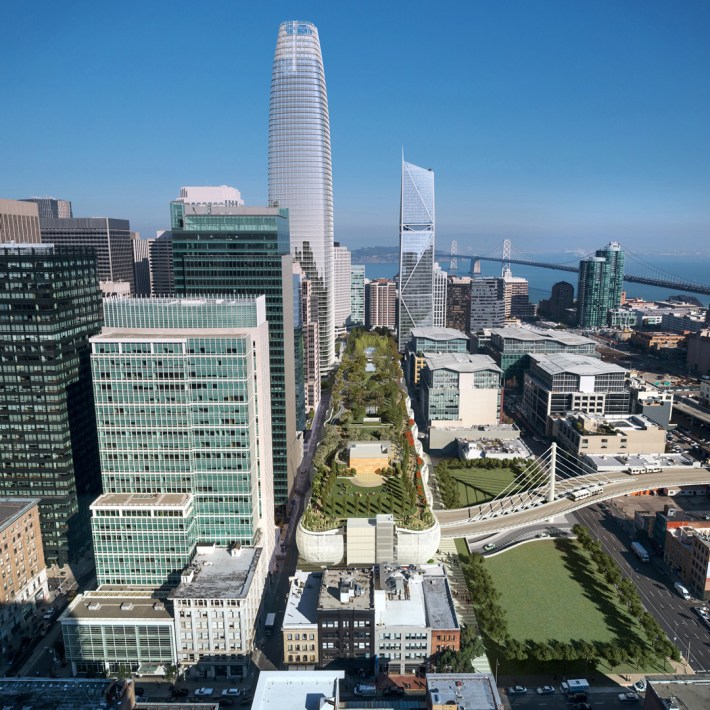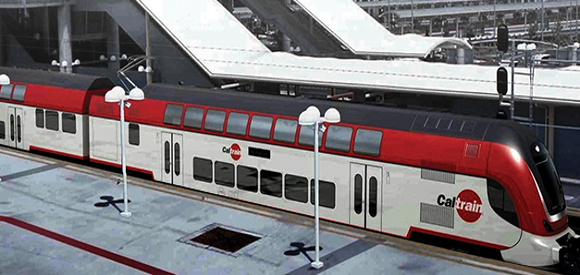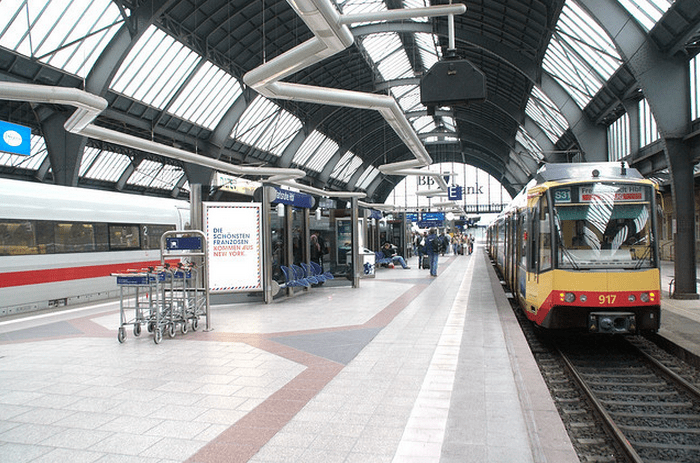Caltrain and High-Speed Rail Pursue Level Boarding, Compatible Platforms
3:27 PM PDT on October 7, 2014

Correction 10/8: Caltrain and the CAHSRA haven't agreed to create a joint specification for train cars, but will explore options for platform compatibility.
Officials representing Caltrain and the California High-Speed Rail Authority recently announced that they'll work closely together over the next several months to explore what options are available from train car manufacturers to allow for level boarding, examine the potential benefits of platform compatibility, and the impacts on the operation of each transit system of doing so.
The cars would allow both systems to board trains from high-level, shared platforms at the future SF Transbay Transit Center, Millbrae, and San Jose stations. The announcement was made last Monday at a meeting hosted by transit advocacy group Friends of Caltrain in Mountain View.
"Level boarding," so called because passengers will be able to walk directly from platforms onto trains without any steps, maximizes passenger capacity by speeding up boarding. It's crucial that these three stations have platforms that work for both Caltrain and CAHSR, to maximize flexibility and to reduce redundancy.
Still, many transit advocates remain skeptical that the CAHSRA is sincere about pursuing shared level platforms. The agency issued a Request for Expressions of Interest on October 1 specifying single-level train cars with a floor height of 51 inches above the rails, incompatible with most of the available bi-level electric commuter trains that Caltrain is considering. CAHSR officials insist they have not ruled out alternative platform heights, but say that trains operating at speeds of 220 mph work best with a floor height of around 50 inches.
Average weekday ridership on Caltrain has doubled since 2004 to 59,900 passenger trips in June of this year, fueled by robust employment growth in both San Francisco and throughout Silicon Valley. Rush-hour crowds continue to grow, and up to one-third of passengers are unable to find a seat on the most popular trains and instead pack into aisles and vestibules.
"I've heard stories of standees crowding three or four into a bathroom because there are not enough seats on these trains to handle the volumes of customers we have," stated Caltrain Modernization Project Delivery Director Dave Couch.

About 20 percent more seats will be available on many rush hour trains by mid-2015, after a $15 million project to lengthen trains from five to six cars, using 16 surplus train cars purchased from LA's Metrolink.
But Caltrain's ridership growth shows no signs of letting up, as cities located along the rail line increasingly focus commercial and residential development within walking distance of Caltrain stations along El Camino Real.
"We're anticipating to take on 200,000 new jobs and another 94,000 units of housing by 2040, primarily along the Caltrain corridor and Market Street," said Gillian Gillett, San Francisco Mayor Ed Lee's transportation policy director. "People want to live here, and companies want to stay here and grow here."
Capacity on an electrified Caltrain could eventually double from today's levels, to over 9,000 passengers per hour, if eight-car trains were run eight times an hour, according to an analysis conducted by Friends of Caltrain. But running such frequent service requires both level boarding and shared platforms, so that Caltrain could use any of the Transbay Center's six proposed platforms even after CAHSR service starts in 2029.
"Caltrain must move towards level boarding," said CAHSR Peer Review Group Chair Lou Thompson. "It's not going to be possible to operate with the frequency and reliability that we are going to need as ridership goes up without level boarding."
Passengers now must climb a small staircase when boarding Caltrain at every station, a remnant of the rail line's 150-year history as a freight line. Faster level boarding would boost train speeds and schedule reliability -- estimates are that it would boost the diesel-to-electric speed gain by another 50 percent.

"We need to operate in the best possibly way, and that's with shared level platforms," said Transbay Joint Powers Authority Principal Engineer Brian Dykes, who explained that many more Caltrain trains per hour could serve the Transbay Center than if dedicated platforms for each transit service at different heights end up getting built.
"There'd be nothing better than to have one common platform height across the entire system," agreed Dave Couch, who summarized the next steps Caltrain must take in order to prepare for the electrification of its service in 2019. "The challenge is how do we get there."
Caltrain currently lacks funds to raise its platforms to allow level boarding, and to replace its existing diesel-powered trains with electric trains, but the CAHSRA is willing to consider funding such "compatibility expenses" as part of a future set of investments, according to Ben Tripousis, the CAHSRA's Northern California regional director.
But the real challenge to achieving a fully-compatible system is procuring train cars for both systems with the same floor height, likely requiring custom-designed train cars rather than an "off the shelf" product -- increasing up-front and long-term maintenance costs.

"Under current plans, the floor of HSR trains will be about 50 inches above the rails, which is typical practice for most of the world's HSR systems," wrote the four-member CAHSR Peer Review Group in an April comment letter on HSR's 2014 Business Plan. "Since the existing Caltrain coaches have a 25-inch floor level, consistency would suggest a 25-inch floor level for the new equipment."
"[Caltrain] is buying rolling stock that's certainly going to be out there 30 years from now," said Thompson. "Decisions made now could foreclose all kinds of options for the future."
Caltrain plans to issue a request for proposals from electric train builders, and award a contract for their construction by the end of 2015. That's when the agency will need to specify a train floor height compatible with HSR. Caltrain is also now collecting feedback from the public on how much space should be provided for bicycles, luggage, and restrooms on its future electric trains via an online survey, which will remain open until October 17.
Stay in touch
Sign up for our free newsletter
More from Streetsblog San Francisco
Streetsblog SF editor Roger Rudick offers constructive criticism of Chicago’s downtown bike network
"There were blocks that felt very safe and very secure," he said. "But then you're immediately – voom! – disgorged into three lanes of moving traffic with no protection."
Commentary: There is Zero Ambiguity to the West Portal Tragedy
What happened in West Portal was entirely predictable and preventable. The city must now close Ulloa to through traffic and make sure it can never happen again




